What diseases do mice carry, ways of infecting humans, methods of controlling mice

A house or field mouse that seems harmless at first glance is a source of dangerous pathologies. Some of them, for example, the plague, are dangerous not only to health, but also to human life.
The body of a small gray rodent can contain several pathogens of various infections at once - cholera, dysentery, tuberculosis, pseudotuberculosis, botulism, brucellosis. Parasitic worms that cause helminthiasis in humans also grow and actively reproduce in it.
Therefore, any contact with a mouse, its droppings, or presence in its habitat can cause infection in an adult or child. Let's take a closer look at what diseases mice carry and find out how to avoid infection.
Content:
- What diseases do mice carry and what infections are they transmitted?
- How can you get infected from mouse droppings?
- Are all mice contagious?
- Do mice carry rabies?
- What disease can result from consuming products from a warehouse where there are mice and rats?
- Methods for controlling mice and rats
What diseases do mice carry and what infections are they transmitted?
Mice are carriers of infectious pathologies of viral, bacterial or fungal origin.
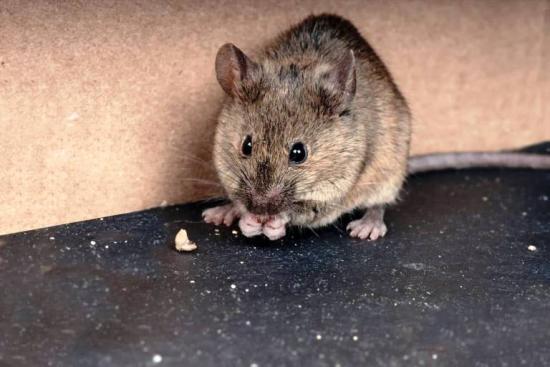
After the pathogen enters the human body, the incubation period of the disease begins. A virus or bacteria infects cells, multiplies, and spreads to other internal organs.But no symptoms appear yet, so the person has no idea that he is already infected.
And at this time the following pathologies can develop in his body:
- leptospirosis is a naturally occurring zoonotic infectious disease characterized by damage to the liver, kidneys, and nervous system, accompanied by hemorrhagic symptoms and jaundice;
- tularemia is an acute infectious pathology that affects the lymph nodes, skin, mucous membranes, occurring with severe symptoms of general intoxication;
- yersiniosis is an acute infection that affects the gastrointestinal tract and is complicated by toxic-allergic reactions;
- helminthiasis - a helminthic disease caused by round and flat, less often ringed and spiny-headed parasitic worms.
At the final stage of incubation, waste products of infectious agents penetrate into the blood.
General intoxication of the body develops with its characteristic symptoms: fever, chills, fever, muscle pain. These are typical manifestations of all infections transmitted to humans from mice.
An interesting fact is that rodents themselves usually do not get sick or die in a very distant time.
Let's watch a video about what diseases mice carry and the dangers of living next to rodents:
How can you get infected from mouse droppings?
A bite from an infected mouse is 100% likely to lead to human infection, provided that he has not previously been vaccinated against this disease.
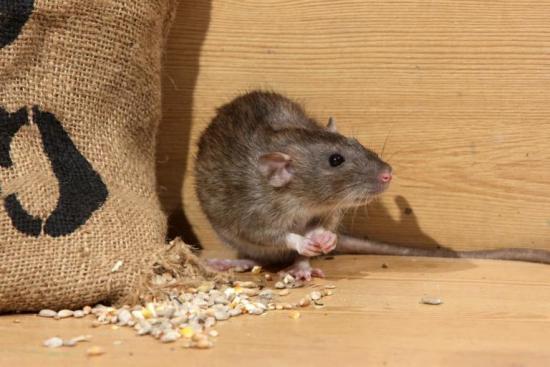
Gray rodents attack humans extremely rarely - when driven into a corner. They do not bite even when nests are destroyed or offspring are destroyed.
However, cases of transmission of severe pathologies from mice to humans are constantly observed.
Infection occurs through excrement, which contains eggs and larvae of helminths, viruses, bacteria, and pathogenic bacteria.
What are the routes of transmission:
- air. Dry excrement in the form of dust is carried by air currents. When they are inhaled by a person, the pathogen penetrates the lungs or settles on the mucous membranes of the upper respiratory tract;
- contact. If there are injuries or microdamages on the human body (abrasions, cuts, burns), then in contact with mouse droppings there is a high probability of infectious agents entering the blood;
- nutritional. Wind-borne excrement is evenly distributed on food, drinking water, and dishes. Without subsequent heat treatment, they become a source of infection.
- Most often, people become infected with helminthiasis through mouse droppings. But in clinical practice, cases of infection with pseudotuberculosis, hemorrhagic fever, and salmonellosis have also been noted.
Are all mice contagious?
If a mouse bites, you should consult a doctor immediately for consultation and treatment. But there is no need to panic in advance - not all mice are contagious.
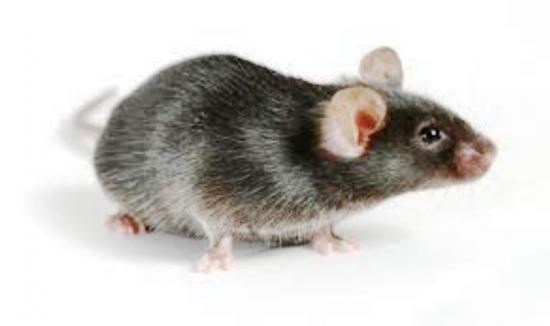
The source of infection is rodents living in flocks. In such cases, it spreads rapidly through contact or consumption of the same food.
But most often, mice become infected from each other through the blood-sucking insects that live on them:
- fleas;
- bedbugs
Insects feed on the blood of rodents. Jumping from one individual to another, they inject saliva with viruses or bacteria with a sharp proboscis.
Mice also warm themselves by huddling closely together and reproduce, which causes them to become infected with parasitic worms.
If there are few gray rodents in the basement or in the garden, then there is a high probability of their “sterility”.But after their bite, doctors rarely choose a wait-and-see approach. They typically prescribe patients broad-spectrum antibiotics to treat potential infections.
Do mice carry rabies?
About ten years ago in the Rostov region, during haymaking, a mouse infected with rabies bit a small child. The parents not only immediately sought medical help, but also thought to take the dead rodent with them.
All laboratory tests necessary in such cases were carried out. Their results were disappointing - the causative agent of rabies and other infectious agents were found in the blood of the mouse.
With the help of a series of preventive vaccinations, it was possible to avoid infection of the child. A quarantine was declared in the area; the local population was careful when working in the fields. After all, an infected mouse is a signal that there may be rabid rats, foxes, wolves, and wild boars nearby.
If this mouse were eaten by a domestic cat, then it would only be a matter of time before the entire family became infected.
What disease can result from eating food from a warehouse where there are mice and rats?
Mice feel good in haystacks that are not collected for the winter and in the attics of residential premises. Their flocks live in barns, cattle sheds, poultry houses and pigsties.
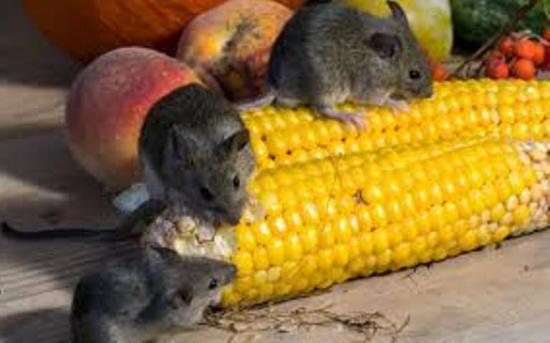
Gray rodents are the scourge of food warehouses and a headache for their employees. Once a mouse has entered a room, it will not leave it without permission.
It is warm here, there is a lot of available food and secluded corners where it is easy to hide in a moment of danger.
Rodents release pathogens of the following diseases into the environment:
- salmonellosis.An infectious disease of the gastrointestinal tract that occurs due to the introduction of Salmonella bacteria. Manifested by high fever, attacks of nausea and vomiting;
- brucellosis. A zoonotic infection that often takes a chronic course, irreversibly damaging internal organs. The main symptoms are diarrhea, lack of appetite, joint and epigastric pain.
If the excrement of an infected mouse ends up in a bag of cereal or flour, then the likelihood of infection is minimal. After all, these products are always subject to heat treatment.
Another thing is fresh fruits, vegetables and berries. The causative agents of cholera, dysentery, tuberculosis, pseudotuberculosis, botulism, brucellosis can be easily washed off with running water. But neglecting this hygiene procedure will lead to infection.
Children, people with low immunity, the elderly, and weakened patients are especially predisposed to the development of pathologies.
Methods for controlling mice and rats
Mice are gotten rid of using traditional methods, using mechanical devices and insecticides. Humane methods are practiced - the rodent remains alive and is kept at a safe distance. But there is a high probability of his return soon, so it is better to destroy the rodents.

What control methods are most effective:
- placing mousetraps in places where mice appear most often;
- the use of insecticides - Rat, Brodifan, Testox, Varata;
- the use of electromagnetic and ultrasonic repellers;
- involving the cat in solving the problem with rodents.
A time-tested method of pest control is a trap made of a glass or plastic container with a narrow neck. Sunflower oil is poured into it, seeds or nuts are sprinkled.
The rodent that got inside for food is neutralized.Even sharp claws will not help the mouse get out of the bottle.
An infected mouse is dangerous to humans. Therefore, it is advisable to avoid visiting places where many rodents live. This basement rooms and attics, fields, water meadows. When hiking in nature, you need to wear high shoes and carefully look under your feet when moving.
If there is a mouse in your living room, you should get rid of it as quickly as possible. After all, rodents reproduce quickly - one mature individual gives birth to up to 10 young, infecting them in the process of care.
Let's watch a video on how to get rid of mice in your summer cottage:

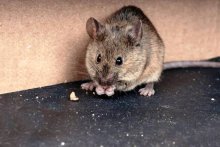


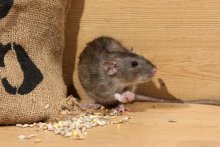
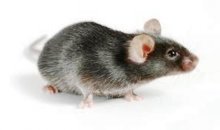







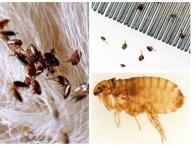
Comments
The most effective method of controlling mice in the house is cats. Even the smell of a cat scares away gray robbers. Cats, of course, need to be regularly vaccinated against rabies.
The most effective method in the fight against rodents is cats. All poisons and mousetraps are useless. Rodents hear the smell of a cat and will not stay with you.
If mice eat and run through the poison, they may then run through the vegetables and fruits you eat. And this is very unsafe!
We have a lot of cats in our gardens, but also a lot of mice. Cats are too lazy to catch mice; they are fed well anyway. And there’s plenty of space for mice there! For me, even the apples ripen at the same time and lie sprinkled around the apple trees. Eat - I don’t want to. Well, I’ll throw it in the compost heap - won’t they get in there?
From my observations, cats are not too keen on the idea of eating mice. If you do not give them ready-made food with appetite-stimulating chemical additives, they prefer pigeons and even crows. I always fight mice in the house with poisoned baits; it doesn’t help for long, but if you’re not lazy, the situation will be under control.
In apartment buildings, especially on the first floors, there are mice. It is best to catch them with a mousetrap, the most common one, a trap. I always do this. Mice are afraid of people and run away from them, so the likelihood of being bitten and infected by something is minimal.
Poisons help a lot, but if a mouse eats poison and climbs somewhere and dies there, then you can spend a long time looking for it. And during this period the stench is simply tropical and impossible, it is quite possible to get poisoned.